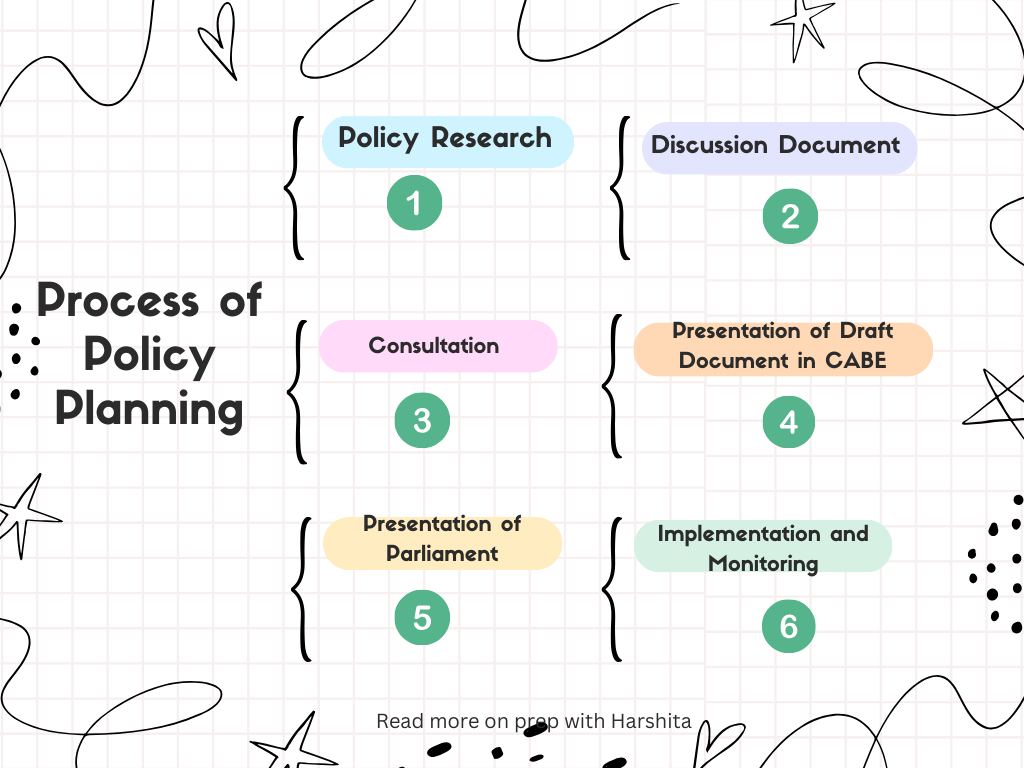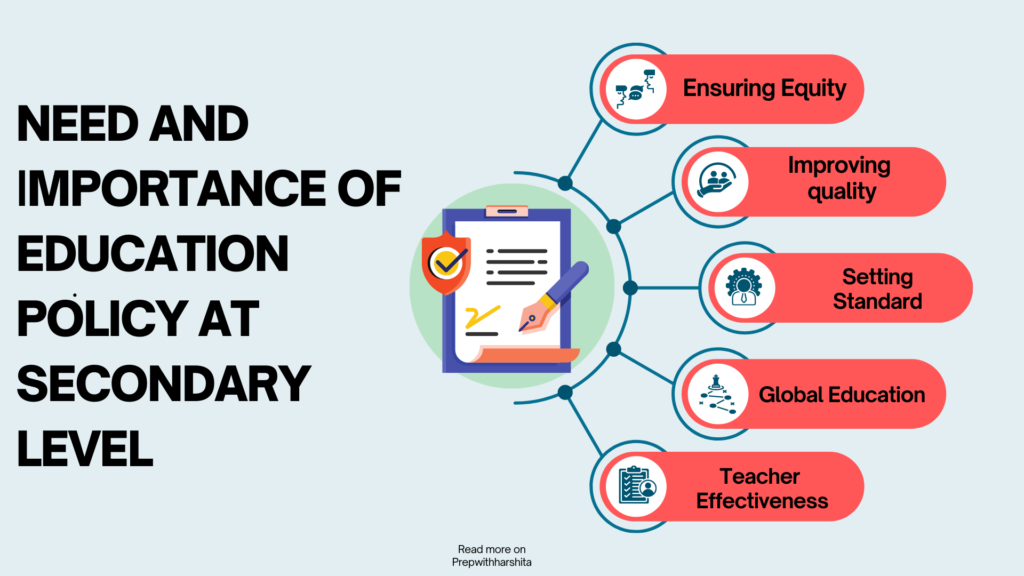The process of policy formulation involves several stages, including policy research, the creation of discussion documents, consultations, the constitution of working groups, and the presentation of draft documents in relevant bodies like the Central Advisory Board of Education (CABE) and Parliament.
Let’s Discuss the Process of Policy Formation in Detail :
Policy Research
- Identification of Issues: The process begins with identifying the issues that need to be addressed through policy. This may involve research, analysis of existing data, and the identification of gaps or challenges in the current system.
- Data Collection and Analysis: The data is collected and analyzed to understand the scope and impact of the issues. This may involve quantitative and qualitative research methods.
- Review of Best Practices: Policymakers often review best practices from other regions or countries to gain insights into effective approaches to similar issues.
Discussion Document :
- Drafting a Discussion Document: Based on the research findings, a discussion document is drafted. This document outlines the issues, presents the research findings, and proposes potential policy options. It serves as a starting point for further discussions.
- Internal Review: The discussion document is typically reviewed internally within the policymaking body or government department to ensure clarity and alignment with broader government goals.
Consultations:
- Stakeholder Consultations: Policymakers engage in consultations with relevant stakeholders, including experts, community members, non-governmental organizations, and affected parties. This helps in gathering diverse perspectives and input.
- Public Consultations: Depending on the nature of the policy, there may be public consultations to ensure that the policy reflects the needs and concerns of the broader population.
Constitution of Working Groups:
- Formation of Working Groups: Based on the feedback received during consultations, working groups may be formed to go deeper into specific aspects of the policy. These groups typically consist of experts and representatives from relevant sectors.
- In-Depth Analysis: Working groups analyze the policy in detail, considering different scenarios, potential challenges, and alternative solutions. They may also conduct additional research to inform their recommendations.
Presentation of Draft Document in CABE:
- Central Advisory Board of Education (CABE): In the context of education policy, CABE is a crucial body for discussions and approvals. The draft policy document is presented to CABE for review and feedback.
- Feedback and Revision: CABE members provide feedback, and the draft may undergo revisions based on the discussions. This iterative process ensures that the policy aligns with the broader education goals and receives input from key stakeholders.
Presentation of Parliament
- Cabinet Approval: After CABE review and revisions, the draft policy is presented to the Cabinet for approval. The Cabinet, comprising senior government ministers, considers the policy’s implications, feasibility, and alignment with overall government priorities.
- Parliamentary Debate and Approval: Once approved by the Cabinet, the policy is presented to the Parliament for debate and approval. Members of Parliament discuss the policy, ask questions, and vote on its adoption.
Implementation and Monitoring:
- Implementation Plan: After parliamentary approval, an implementation plan is developed. This plan outlines the steps, timelines, and responsibilities for putting the policy into practice.
- Monitoring and Evaluation: Ongoing monitoring and evaluation are established to assess the policy’s effectiveness. This may involve regular reviews, data collection, and adjustments based on feedback and changing circumstances.
Also Read: Need of Educational Planning

Also Visit: Prep with Harshita



